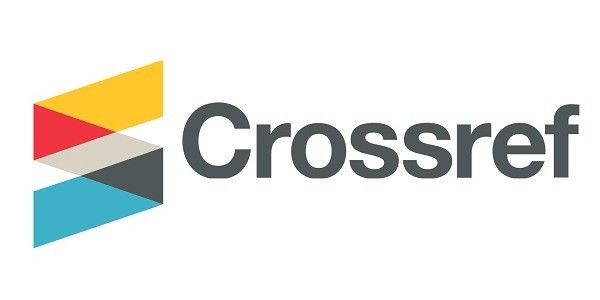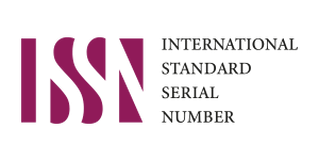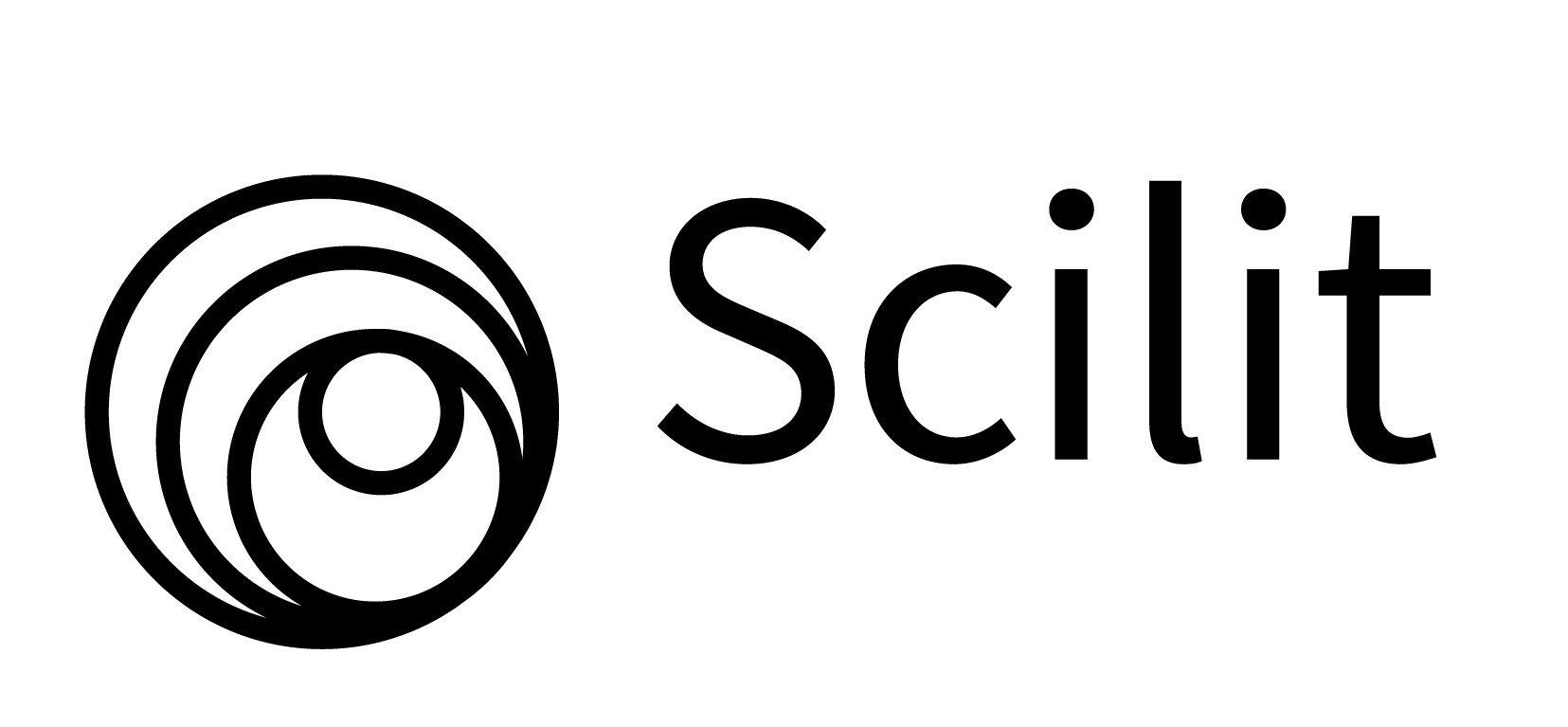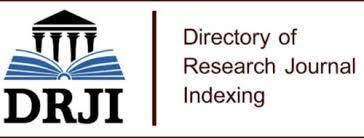Research Article
Comparative Evaluation of Efficacy of Coronally Advanced Flap With or Without A-PRF Membrane in The Treatment of Miller’s Class I / II Gingival Recession Defect- A Clinical Study
- Dr. Navneet Kaur
Corresponding author: Navneet Kaur, Reader, Department of Periodontics & Oral Implantology, National Dental College & Hospital, Derabassi, Punjab, Phone no: 9780925518.
Volume: 2
Issue: 1
Article Information
Article Type : Research Article
Citation : Bhavya Pruthi, Sehraj Chhina, Gurpreet Kaur, Navneet Kaur. Comparative Evaluation of Efficacy of Coronally Advanced Flap With or Without A-PRF Membrane In The Treatment of Miller’s Class I / II Gingival Recession Defect- A Clinical Study. Journal of Dentistry and Oral Health, 2025, Pg.no: 1-9, 2(1). https://doi.org/10.61615/JDOH/2025/FEB027140306
Copyright: © 2025 Navneet Kaur. This is an open-access article distributed under the terms of the Creative Commons Attribution License, which permits unrestricted use, distribution, and reproduction in any medium, provided the original author and source are credited.
DOI: https://doi.org/10.61615/JDOH/2025/FEB027140306
Publication History
Received Date
17 Feb ,2025
Accepted Date
01 Mar ,2025
Published Date
06 Mar ,2025
Abstract
Introduction
Aesthetic concern is one of the main reasons behind the treatment of gingival recession defects. A lot of clinical evidence supports the applications of A-PRF in soft tissue healing, especially for the coverage of Miller’s class I and II gingival recession defects when combined with various root coverage procedures. A-PRF plays an important role as a biodegradable scaffold and favors the development of micro-vascularization. Coronally advanced flap is considered the gold standard approach for root coverage, and the addition of adjunctive use of A-PRF has a beneficial effect by releasing the growth factor and promoting the superior clinical outcome.
Aims and Objectives
1. To clinically evaluate the additional effectiveness of A-PRF membrane when used in combination with a Coronally advanced flap in the treatment of Miller’s Class I / II gingival recession defect.
2. To assess and evaluate the clinical outcome in terms of clinical parameters such as recession depth, recession width, gingival thickness, and percentage of mean root coverage after root coverage procedure with or without the use of A-PRF.
Materials and Methods
A total of 20 patients with the age group of 30-50 years diagnosed with Miller’s Class I / II gingival recession defect were randomly selected & divided into two groups with 10 patients in each group: Group 1 (Test group): 10 patients treated with Coronally advanced flap surgery with a placement of Advanced Platelet-rich fibrin (A-PRF). Group 2 (Control Group): 10 patients treated with Coronally advanced flap surgery alone. Clinical parameters such as Pocket probing depth, clinical attachment level, recession depth, recession width, gingival thickness, and percentage of mean root coverage were recorded at baseline & after 1 month postoperatively.
Results
The mean root coverage (MRC) was 45% and 52%, for the Control group and Test group, respectively, after 1 month postoperatively. A statistically significant difference was demonstrated postoperatively between the two groups in terms of recession depth (RD), recession width (RW), Gingival Thickness (GT), percentage of mean root coverage, and Pocket Probing Depth (PPD) after 1 month. However, Clinical Attachment Level (CAL) was found to be non-significant.
Conclusion
The result obtained from the study showed that there is additional effectiveness of Advanced PRF when used with a combination of Coronally advanced flap in the treatment of Miller’s Class I / II gingival recession defect.
Keywords: Coronally advanced flap, Recession depth, Advanced platelet-rich fibrin, Periodontal Regeneration, growth factors
►Comparative Evaluation of Efficacy of Coronally Advanced Flap With or Without A-PRF Membrane in The Treatment of Miller’s Class I / II Gingival Recession Defect- A Clinical Study
Bhavya Pruthi1, Sehraj Chhina2, Gurpreet Kaur3, Navneet Kaur4*
1PG student, Department of Periodontics & Oral Implantology, National Dental College & Hospital, Derabassi, Punjab.
2BDS, Department of Periodontics & Oral Implantology, National Dental College & Hospital, Derabassi, Punjab.
3Professor & HOD, Department of Periodontics & Oral Implantology, National Dental College & Hospital, Derabassi, Punjab.
4*Reader, Department of Periodontics & Oral Implantology, National Dental College & Hospital, Derabassi, Punjab.
Introduction
Gingival recession is the displacement of the soft tissue margin apical to the cement enamel junction (CEJ), which not only exposes the root surface but also impairs the aesthetics. Marginal gingival tissue recession is associated with several etiological and predisposing factors presenting a complex etiology. Gingival recession is always associated with loss of clinical attachment. Various epidemiological studies have reported in the literature presenting a variation in the results based on both the prevalence and severity of gingival recessions, which is most likely because of data heterogeneity related to age, gender, ethnicity, inclusion, and exclusion criteria.1 Numerous factors have been implicated in the etiology of gingival recession in both cross-sectional and longitudinal studies2, although the AAP-EFP World Workshop 2017 concluded that the etiology of gingival recession remains unclear. Several predisposing factors have been suggested: mechanical trauma, plaque accumulation, periodontal phenotype, attached gingiva, cervical restorative margins, dental malposition, high frenum attachment and shallow vestibular depth, and orthodontic treatment.3
The need for gingival recession management is to prevent plaque & calculus accumulation, to prevent tooth abrasion, root caries, hypersensitivity, and most importantly, the esthetic concern of the patients. Root coverage is a successful and predictable procedure in periodontics.4 The root coverage procedure is to be performed with main objectives that include increasing the width of keratinized gingiva, improving gingival biotype, preventing root caries, managing non-carious cervical lesions (NCCL), and maintaining tooth-supporting structures. The ultimate goal of recession management is the complete coverage of the root surface. The probing depth should be minimal after the treatment, and the covering tissues should be chromatic with well-integrated texture to the adjacent soft tissues.5 The predictable periodontal surgery was first proposed by Miller in 1988, comprising different surgical techniques intended to correct and prevent anatomical, developmental, traumatic, or plaque disease-induced defects of the gingiva, alveolar mucosa, or bone. Since the beginning of the 20th century, various surgical procedures have been proposed for achieving root coverage.
There are several surgical techniques proposed to treat gingival recessions in the dental literature, including Pedicle Flaps, Coronally Advanced flaps, Free gingival grafts, and Connective Tissue grafts. The selection of surgical techniques to cover the root recession depends on the anatomical characteristics of the recession site, patient concern, and the amount of keratinized tissue apical to the recession sites. In 1926, Norberg introduced the Coronally Advanced Flap procedure. A coronally advanced flap utilizes the gingiva present immediately apical to the recession site, thereby without compromising tissue structures. Coronally advanced flaps can be used to cover multiple recession sites with ease when there is adequate keratinized tissue apical to the recession defect. A Coronally Positioned flap (CPF) is the first choice of surgical technique. A coronally positioned flap provides an optimum root coverage with soft tissue color and texture adjacent to the recession defects. A coronally advanced flap is most beneficial for the treatment of multiple adjacent recession-type defects, however, it can also be employed to treat single recession defects. Among the surgical procedures used for root coverage, it results in optimum root coverage, good Color blending with respect to adjacent soft tissues, and good recovery of original soft tissue morphology. The Coronally advanced flap (CAF) procedure does not involve a palatal donor site, and therefore, it is a safe and predictable approach. In patients with high aesthetic expectations, the CAF is the first choice when there is adequate keratinized tissue apical to the root exposure.
Coronally advanced flap (CAF) is the most frequent approach for treating gingival recessions and it can be combined with a connective tissue graft (CTG), or other grafting materials such as barrier membrane, EMD, acellular dermal matrix and advanced usage of biomaterials in the form of PRF as an adjunct which may accelerate the healing response of the periodontal tissues. The introduction of platelet-rich preparations has revolutionized the concept of healing and regenerative dentistry. There are five major Growth Factors (GFs) that are released by the application of Platelet Concentrates, and they are, platelet-derived Growth Factor, fibroblast Growth Factor, Transforming Growth Factor-beta, Vascular Endothelial Growth Factor, and Insulin-like Growth Factor-I from the local application of Platelet Concentrates, which enables better tissue regeneration and healing.6
PRF membrane is a second-generation platelet concentrate with a fibrin matrix in which platelet cytokines, growth factors, and circulating stem cells are trapped and may be released after a certain time. It can serve as a resorbable membrane.7 The fibrin matrix serves as a scaffold, slowly releasing growth factors and cytokines over several days, promoting prolonged and effective healing. There is a decrease in matrix metalloproteinase-8 and interleukin-β levels but an increase in tissue inhibitors of metalloproteinase-1 levels at 10 days, resulting in an increased periodontal wound healing.8
Advanced Platelet-Rich Fibrin (A-PRF) is a variation of PRF that employs a reduced rotational speed idea. A-PRF has the advantage of maintaining a more progressive release of growth factors as compared to standard PRF, which may take more time for growth factors to release.9. The slower and more centrifugation time process of A-PRF exhibits more equally distributed granulocyte neutrophils and a looser fibrin matrix. The salient feature of A-PRF is that it did not settle to the bottom of the tube due to slow centrifugation, resulting in a collection of a greater number of leucocyte cells.10
Due to its excellent regeneration characteristics, Advanced platelet-rich fibrin (A-PRF) has demonstrated promising outcomes in terms of clinical benefits for regeneration treatment. The literature search revealed that there are few clinical studies that have been carried out to check the efficacy of CAF with A-PRF membranes. Therefore, in the light of the above facts, the present study was conducted clinically to evaluate the additional effectiveness of A-PRF membrane when used in combination with a Coronally advanced flap in the treatment of Miller’s Class I / II gingival recession defect.
Materials and Methods
Study Population
For the proposed study, a total of 20 patients were selected from the outpatient department of Periodontics and Oral Implantology. This pilot study was done in the Department of Periodontology and Oral Implantology, National Dental College & Hospital, Derabassi, Punjab. Ethical approval for the study was obtained from the Institutional Ethical Board Committee, and detailed verbal and written consent was taken from each of the patients.
20 patients in the age group of 30-50 years diagnosed with Miller’s Class I / II gingival recession defect were randomly selected & divided into two groups with 10 patients in each group: Group 1 (Test group): 10 patients treated with Coronally advanced flap surgery with placement of Advanced Platelet-rich fibrin (A-PRF). Group 2 (Control Group): 10 patients treated with Coronally advanced flap surgery alone.
Inclusion Criteria
- Patients within the age group of 30-50 years were diagnosed with Miller’s Class I / II gingival recession defect.
- Patients with ≥1mm of attached gingiva with probing pocket depth ≤3 mm at gingival recession sites.
- No previous periodontal surgical treatment involved sites.
- Vital teeth free from dental caries.
- Systemically healthy patients without any debilitating conditions
Exclusion Criteria
- Patients with a history of periodontal surgical treatment within the last 6 months.
- Formers/ current smokers.
- Pregnant and lactating mothers.
- Patients on antibiotic therapy within 6 months.
- Recession defects were associated with caries and teeth with evidence of pulpal pathology.
- Patients with a history of any known systemic disease, allergies, or drug usage that would alter the healing response of the oral tissues.
Methodology
Clinical Procedure
A total of 20 patients with Miller’s Class I / II gingival recession defect were randomly selected & divided into two groups with 10 patients in each group.
Group 1 (Test group) – 10 patients treated with Coronally advanced flap surgery with placement of Advanced Platelet-rich fibrin (A-PRF).
Group 2 (Control Group) – 10 patients treated with Coronally advanced flap surgery alone.
Test Group: Coronally advanced flap surgery with placement of Advanced Platelet-rich fibrin (A-PRF)
After local anesthesia, two vertical releasing incisions were made on the interdental area covering both the mesial and distal line angle of the tooth along with the tooth having Miller’s class I or II gingival recession defect. The vertical releasing incision was continued by an intracellular incision at the gingival margin, including mesial and distal papillae with two slightly divergent incisions extending into the alveolar mucosa using BP blade no. 15. A coronal full-thickness flap was raised up to the mucogingival junction, followed by an apical split-thickness flap. A split-thickness flap was carried out in order to mobilize the flap in a coronal direction with minimal tension following de-epithelialization of the remaining anatomical interdental papilla. After the reflection, a thorough surgical debridement was done, and the root surface was planned using Gracey curettes. Coronal mobilization of the flap was done till the marginal portion of the flap was able to reach a level up to the CEJ and the flap was stable in its final coronal position. The recipient site was covered with moist gauze till the A-PRF membrane was prepared.
10 ml of blood was collected in a glass tube or glass-coated plastic tube without anticoagulant. The A-PRF membrane was centrifugated at 1500 rpm for 14 minutes in a centrifuge machine. The Fibrin clot was taken out from the glass tube with the help of a plier. The fibrin clot was placed in the PRF box, and the clot was scraped off carefully before it was disposed of. Dry gauze was folded over the PRF to make an A-PRF membrane. This can be easily done by driving out the serum from the clot. A PRF membrane was positioned over the recession defects just below the CEJ. The flap was coronally repositioned and secured with holding and interrupted 3-0 silk sutures, along with the placement of periodontal dressing.
Group 1 (Test group) – Coronally Advanced Flap Surgery with Advanced Platelet Rich Fibrin (APRF)

Control Group: Coronally advanced flap surgery alone
The surgical technique applied in the control recession defects was the same as that applied for the test group except for no placement of A-PRF over the recession defect. After local anesthesia, two vertical releasing incisions were made on the interdental area covering both the mesial and distal line angle of the tooth along with the tooth having Miller’s class I or II gingival recession defect. The vertical releasing incision was continued by an intracellular incision at the gingival margin, including mesial and distal papillae with two slightly divergent incisions extending into the alveolar mucosa using BP blade no. 15. A full-thickness flap was raised followed by an apical split-thickness flap and de-epithelialization of remaining anatomical interdental papilla was done with minimal tension. After the reflection, a thorough surgical debridement was done, and the root surface was planned using Gracey curettes. Coronal mobilization of the flap was done till the marginal portion of the flap was able to reach a level up to the CEJ and the flap was stable in its final coronal position. The flap was coronally repositioned and secured with holding and interrupted 3-0 silk sutures, along with the placement of periodontal dressing.
Group 2 (Control group) – Coronally advanced flap surgery alone

Post-Operative Instructions
Post-operative instructions were prescribed that included antibiotics (Amoxicillin 500 mg for 5 days) and analgesics (Ibuprofen). Patients were advised to use Chlorhexidine gluconate 0.2% twice a day for 15 days. Patients were advised not to brush their teeth in the treated area. The periodontal dressing was removed 1 week after surgery, while sutures were removed after 2 weeks.
Assessment of Clinical Parameters
Clinical parameters such as Pocket probing depth, clinical attachment level, recession depth, recession width, gingival thickness, and percentage of mean root coverage were recorded at baseline & after 1 month postoperatively.
Statistical Analysis
The parameters were tabulated and put to statistical analysis. The data for the present study were analyzed using the SPSS statistical software 23.0 Version. The descriptive statistics included mean and standard deviation. The intergroup comparison for the difference in mean scores between the groups was done using the Whitney U test.
Results
Table 1: Intergroup Comparison of All Clinical Parameters In Between Group 1 And Group 2 At Baseline and After 1 Month
|
|
Gingival Thickness (GT) |
Recession Depth (RD)
|
Recession Width (RW) |
Probing Pocket Depth (PPD) |
Clinical Attachment Level (CAL) |
|||||
|
|
Group 1 |
Group 2 |
Group 1 |
Group 2 |
Group 1 |
Group 2 |
Group 1 |
Group 2 |
Group 1 |
Group 2 |
|
Baseline |
0.69±0.09 |
0.52±0.19 |
3.50±0.53 |
3.30±0.49 |
4.20±0.78 |
3.90±0.73 |
6.20±0.78 |
5.00±0.81 |
8.50±1.17 |
9.50±0.97 |
|
1 Month |
0.99±0.05 |
0.67±0.17 |
1.30±0.82 |
1.60±0.51 |
2.10±0.56 |
2.30±0.48 |
2.60±0.51 |
2.50±0.52 |
3.80±1.13 |
4.20±0.78 |
|
P Value |
0.001* |
0.042* |
0.043* |
0.001* |
0.174** |
|||||
*P value <0.05 (statistically significant)
*P value >0.05 (non-statistically significant)
Table 1 shows an intergroup comparison of all the clinical parameters between group 1 and group 2 at baseline and after 1 month. The intergroup comparison of gingival thickness (GT), recession depth (RD), recession width (RW) and probing pocket depth (PPD) at baseline and 1 month was found to be statistically significant in between the groups i.e., Group 1 (CAF with A-PRF) and Group 2 (CAF alone). However, clinical attachment level (CAL) was found to be statistically non-significant between Group 1 (CAF with A-PRF) and Group 2 (CAF alone) in between time intervals, i.e., baseline and after 1 month.
In terms of gingival thickness (GT), the result showed in Table 1 and Graph 1 that the intergroup comparison of gingival thickness was found to be statistically significant between the two groups (p˂0.05) at baseline and 1 month. There was a greater increase in gingival thickness over a period of 1 month. However, the group 1 data requires further evaluation for statistical significance.
Graph 1: Comparison Of Gingival Thickness at Baseline And 1 Month In Between Group 1 And Group 2

For the clinical parameters of recession depth (RD) and recession width (RW), the result is shown in Table 1 and Graphs no. 2 and 3. The inter-group comparison of recession depth was found to be statistically significant between the two groups (p˂0.05) at baseline and 1 month. There was a greater improvement in recession depth over a period of 1 month.
Graph 2: Comparison of Recession Depth at Baseline And 1 Month In Between Group 1 And Group 2

Graph 3: Comparison of Recession width at baseline and 1 month in between group 1 and group 2

Graph 4: Comparison of Probing Pocket Depth at Baseline And 1 Month In Between Group 1 And Group 2

Graph 5: Comparison of Clinical attachment level at baseline and 1 month in between group 1 and group 2

Table 2: Intergroup Comparison of The Percentage of Mean Root Coverage Between Group 1 And Group 2
|
|
Mean |
Std Dev |
Std Error |
P value |
Significance |
|
Group 1 |
0.529 |
0.274 |
0.086 |
0.001 (Significant) |
|
|
Group 2 |
0.450 |
0.145 |
0.046 |
||
In group 2, the mean root coverage was 45.0%, with a standard deviation of 14.5 and a standard error of 4.60. Group 1, in comparison to group 2, had a higher mean root coverage of 52.90, but with a larger standard deviation of 27.4 and a standard error of 8.6. Group 1 showed a higher mean root coverage as compared to group 2, and the difference between the groups was found to be statistically significant.
Discussion
The aim of periodontal plastic surgery is to treat the gingival recession deformities and defects, along with an improvement in aesthetics with the blending of tissue color and texture post-operatively. In the past researchers have developed numerous treatment strategies and techniques to treat gingival recession defects to overcome the drawbacks of periodontal plastic surgeries in terms of patient-related factors (plaque control and smoking), site-related factors (recession depth, width, keratinized tissue width and interdental attachment level) and surgery-related factors (flap thickness, flap tension and position). One of the techniques known as the Coronally Advanced Flap provides good access to the treatment site, allowing the clinician to perform both full-thickness and partial-thickness flaps in a flexible manner in order to reduce the flap tension and for the coronal movement of the flap. Previous studies in the literature stated that flap tension is a negative predictor of periodontal plastic surgeries. Therefore, the positioning of the gingival margin at least 2mm coronal to the CEJ results in an increased likelihood of achieving complete root coverage.11 Pini Prato et al in 2000, conducted a study to compare the flap with and without tension and concluded that 45% of sites achieved complete root coverage when the flap was tension-free, whereas only 18% of the defects achieved complete root coverage when residual tension of the flap was present.12 Flap thickness is also the major risk factor in evaluating the outcome of root coverage. In a recent study, it has been demonstrated that flap thickness was a negative predictor of root coverage only in those cases where CAF was performed without an additional graft.13 Although in cases where graft or barrier membrane was used in conjunction with CAF, flap thickness was not a risk factor. Therefore, clinicians can use this information in cases where thin mucosa is present and an additional grafting or membrane may be utilized.
As an alternative to the use of autogenous grafts, several biomaterials have been studied for the treatment of gingival recession defects. Several generations of platelet concentrate, along with other various blood components such as fibrin and leucocytes, have been investigated with different periodontal plastic surgical techniques. Platelet concentrates are the best source of autogenous graft that include Platelet Rich Plasma (PRP), Platelet Rich Growth Factor (PRGF) or Platelet Rich Fibrin (PRF), Leukocyte-Platelet Rich Fibrin (L-PRF) and Advanced-Platelet Rich Fibrin (A-PRF). Mixed results have been obtained when A-PRF is used in conjunction with CAF. Meta-analysis demonstrated that there was PD reduction, CAL gain, KTW gain, and recession reduction.14 A-PRF membranes are simple to employ since they are simple to prepare and manage and do not require anticoagulants. A PRF membrane can be incised, fitted, and sutured to the site with a recession defect, and it also has the potential to perform similar functional and structural properties of the gingiva to be reconstructed.15 A-PRF has also been shown to have beneficial effects on tissue thickness, keratinized gingival width, and average gingival coverage. Platelet-rich fibrin (PRF) was investigated by French scientist Choukroun et al.. in 2001 as a member of second-generation platelet concentrate.
The choice of using A-PRF in the present study is because of its advantageous properties, inexpensive nature, ease of manipulation, and delivery to the surgical site. A-PRF formed the reticular type of fibrin network, which is thicker as compared to I-PRF or a concentrated growth factor. However, Platelet concentrate formed a similar type of clot when the assessment of L-PRF or P-PRF was done.16 The concept of low-speed centrifugation provides macrophages as well as a greater amount of release of growth factors, which support the sustainability of A-PRF for a duration of 7-28 days. It also has a direct impact on tissue regeneration by boosting levels of collagen mRNA and fibroblast migration and proliferation.17 The present study was performed to clinically evaluate the additional effectiveness of A-PRF membrane when used in combination with a Coronally advanced flap in the treatment of Miller’s Class I / II gingival recession defect. Clinical parameters such as Pocket probing depth, clinical attachment level, recession depth, recession width, and gingival thickness were recorded at baseline & after 1-month postoperatively. On clinical evaluation, all the clinical parameters were found to be statistically significant at baseline and 1 month in between group 1 and group 2 except clinical attachment level, which was found to be statistically non-significant in between group 1 and group 2.
Overall, a significant improvement in recession depth (RD), recession width (RW), and gingival thickness (GT) when treated with CAF and A-PRF. This result can be attributed to the regenerative potential of A-PRF. A-PRF membrane has a positive effect in terms of improvement in soft-tissue wound healing/regeneration and further bears the added defense component from pathogen-fighting leukocytes, which are capable of significantly reducing the rate of infection and complication.18 The reduction in recession depth and recession width with a gain in gingival thickness shows the beneficial effect of A-PRF as an adjunctive effect on gingival recession. The results were in accordance with the study by Chekurthi et al in 2021, which concluded that A-PRF could be employed as a therapy option for cases of gingival recession defect.19 For the repair of gingival recession abnormalities, advanced platelet-rich fibrin (A-PRF) in conjunction with a coronally advanced flap (CAF) significantly influences the clinical outcome. Tadepalli et al. in 2022 assessed the therapeutic effectiveness of L-PRF and A-PRF combined with CAF in correcting anomalies of gingival recession and suggested that both L-PRF and A-PRF can effectively treat gingival recession in the maxilla.20
Baseline gingival thickness plays a critical role in root coverage procedures in deciding the prognosis of the treatment. In this study, gingival thickness was evaluated at baseline and after 1 month. Overall, there was a statistically significant increase in the gingival thickness between Group 1 and Group 2. Thamaraiselvan et al. in 2015 also achieved a significant increase in the gingival thickness in the CAF+PRF membrane group compared to CAF alone in the groups at 6 months. The mean increase in the thickness was 0.30 ± 0.10 in the PRF membrane group and 0.03 ± 0.04 in the CAF group at 6 months.21 On the contrary, Gupta et al. in 2015 found a non-significant increase in the gingival thickness in the CAF+PRF membrane group and CAF alone group at 6 months.22 However, direct comparisons cannot be done with the findings of Thamaraiselvan et al.. in 2015 and Gupta et al.. in 2015 because of the difference in the protocol and technique used for the measurement of gingival thickness.
In this study, the percentage of root coverage was calculated after 1 month postoperatively. The mean percentage of root coverage was higher in group 1 as compared to group 2 and was found to be statistically significant. These results are in accordance with the study done by Ozcelik et al. in 2011, where authors achieved mean root coverage with a highly significant difference in percentage mean root coverage in CAF + B group as compared to CAF alone at 6 months.23 Tunali et al.. in 201524 and Eren et al.. in 201415 observed a comparable percentage of root coverage at 6 months when the CAF+PRF group was compared with the CAF+CTG group. In our study, both the groups showed root coverage, although higher mean root coverage was achieved in group 1 as compared to group 2. This may be possibly due to holding the flap in a maximum coronally advanced position and the use of A-PRF as an adjunctive measure. The placement of PRF between the root surface and flap, which in turn separated and stimulated the interface between the flap and root surface. PRF acts as a healing and inter-positional biomaterial that stimulates the gingival connective tissue on its whole surface with growth factors and impregnates the root surface with key matrix proteins for cell migration (fibronectin, vitronectin, and thrombospondin-1).
Although the present study represented a significant improvement in all the clinical parameters among both the groups, there are a few limitations of this study, which include a small sample size, shorter duration of follow-up (1 month), and lack of histological analysis, which may affect the reproducibility of results. A longer follow-up period of evaluation may be necessary for the clinical trial to appreciate the clinical effectiveness of this technique, along with the use of A-PRF as an adjunct for the treatment of recession defects to evaluate its long-term benefits.
Conclusion
The technological advancement of PRF opens the path for unique biomaterial and their application as platelet concentrate in dentistry. A-PRF showed a positive and beneficial effect on clinical parameters when used as an adjunct to CAF for the treatment of class I and class II recession defects. The result of the present study is found to be statistically significant in terms of clinical outcomes regarding root coverage with CAF along with A-PRF in comparison to CAF alone. A-PRF use in various periodontal regeneration treatment modalities has been demonstrated by several researchers to produce better clinical results. A-PRF and bone grafts together have been shown to significantly correct periodontal abnormalities clinically. A-PRF is utilized successfully and without any complications in the periodontal regeneration and healing process.
Within the limitation of the present study, it can be concluded that CAF design is a predictable and reliable minimal invasive technique for root coverage. Further studies are needed to compare the results with A-PRF in combination with other periodontal plastic procedures for localized or multiple root coverage. Histological evaluation should be needed to investigate the assessment of the tissue healing process. Furthermore, standardization of the preparation protocol is important to achieve an optimal effect of A-PRF in regenerative procedures.
- Marini, M. G, Greghi, S. L, Passanezi, E, Sant'ana, A. C. (2004). Gingival recession: prevalence, extension and severity in adults. J Appl Oral Sci. 12(3): 250-255.
- Kassab, M. M, Cohen, R. E. (2003). The etiology and prevalence of gingival recession. J Am Dent Assoc. 134(2): 220-225.
- Cortellini, P, Bissada, N. F. (2018). Mucogingival conditions in the natural dentition: Narrative review, case definitions, and diagnostic considerations. J Clin Periodontol. 89 (1): 204-213.
- Tatakis, D. N, Chambrone, L, Allen, E. P, Langer, B, McGuire, M. K, Richardson, C. R, Zadeh, H. H. (2015). Periodontal soft tissue root coverage procedures: a consensus report from the AAP Regeneration Workshop. J Periodontol. 86(2): 52-55.
- Cortellini P, Pini Prato G. (2012). Coronally advanced flap and combination therapy for root coverage. Clinical strategies based on scientific evidence and clinical experience. Periodontology 2000. 59(1): 158- 184.
- Luo HY, Li RM, Wang CL, Peng L, Ye L. (2015). The adjunctive use of platelet concentrates in the therapy of gingival recessions: a systematic review and meta‐analysis. Journal of oral rehabilitation. 42(7): 552 -561.
- Soffer E, Ouhayoun JP, Anagostou F. (2003). Fibrin sealants and platelet preparations in bone and periodontal healing. Oral Surg Oral Med Oral Pathol Oral Radiol Endod. 95(5): 521-528.
- Verma UP, Yadav RK, Dixit M, Gupta A. (2017). Platelet-rich Fibrin: A Paradigm in Periodontal Therapy - A Systematic Review. J Int Soc Prev Community Dent. 7(5): 227-233.
- Ghanaati S, Booms P, Orlowska A. (2014). Advanced platelet-rich fibrin: A new concept for cell- Based tissue engineering by means of inflammatory cells. J Oral Implantol. 40(6): 679-689.
- Kobayashi E, Flückiger L, Fujioka-Kobayashi M. (2016). Comparative release of growth factors from PRP, PRF, and advanced-PRF. Clin Oral Investig. 20(9): 2353-2360.
- Pini Prato GP, Baldi C, Nieri M, Franseschi D, Cortellini P, Clauser C, Rotundo R, Muzzi L. (2005). Coronally advanced flap: the post-surgical position of the gingival margin is an important factor for achieving complete root coverage. J Periodontol. 76(5): 713–722.
- Pini Prato, G, Pagliaro, U, Baldi, C, Nieri, M, Saletta, D, Cairo, F, Cortellini, P. (2000). Coronally advanced flap procedure for root coverage. Flap with tension versus flap without tension: a randomized controlled clinical study. J Periodontol. 71(2): 188-201.
- Garces-McIntyre, T, Carbonell, J. M, Vallcorba, L, Santos, A, Valles, C, Nart, J. (2017). Coronal advanced flap in combination with a connective tissue graft. Is the thickness of the flap a predictor for root coverage? A prospective clinical study. Journal of clinical periodontology. 44(9): 933-940.
- Castro, A. B, Meschi, N, Temmerman, A, Pinto, N, Lambrechts, P, Teughels, W, Quirynen, M. (2017). Regenerative potential of leucocyte-and platelet-rich fibrin. Part A: intra-bony defects, furcation defects and periodontal plastic surgery. A systematic review and meta-analysis. Journal of clinical periodontology. 44(1): 67-82.
- Eren G, Atilla G. (2014). Platelet-rich fibrin in the treatment of localized gingival recessions: a split mouth randomized clinical trial. Clin Oral Investig. 18(8): 1941–1948.
- Lei, L, Yu, Y, Han, J, Shi, D, Sun, W, Zhang, D, Chen, L. (2020). Quantification of growth factors in advanced platelet-rich fibrin and concentrated growth factors and their clinical efficacy as adjunctive to the GTR procedure in periodontal intrabony defects. J. Periodontol. 91(4): 462-472.
- Fujioka‐Kobayashi M, Miron RJ, Hernandez M. (2017). Optimized platelet‐rich fibrin with the low‐speed concept: growth factor release, biocompatibility, and cellular response. J periodontal. 88(1): 112–121.
- Richard J. Miron and Michael A. Pikos. (2018). PRF as a Barrier Membrane in Guided Bone Regeneration. Report Describing G-Forces from Studies on Platelet-Rich Fibrin: Necessity for Standardization of Relative Centrifugal Force Values. International Journal of Growth Factors and Stem Cells in Dentistry. 1(3): 1-9.
- Chekurthi S, Tadepalli A, Parthasarathy H. (2022). Evaluation of clinical efficacy of advanced platelet‐rich fibrin in the management of gingival recession defects: case series. Clin Adv Periodontics. 12(2): 88–93.
- Tadepalli A, Chekurthi S, Kavassery Balasubramanian S. (2022). Comparative evaluation of clinical efficacy of leukocyte-rich platelet-rich fibrin with advanced platelet-rich fibrin in management of gingival recession defects: a randomized controlled trial. Med Princ Pract. 31(4): 376– 383.
- Thamaraiselvan M, Elavarasu S, Thangakumaran S, Gadagi JS, Arthie T. (2015). Comparative clinical evaluation of coronally advanced flap with or without platelet rich fibrin membrane in the treatment of isolated gingival recession. J Indian Soc Periodontol. 19(1): 66-71.
- Gupta S, Banthia R, Singh P, Banthia P, Raje S, Aggarwal N. (2015). Clinical evaluation and comparison of the efficacy of coronally advanced flap alone and in combination with platelet rich fibrin membrane in the treatment of Miller Class I and II gingival recessions. Contemp Clin Dent. 6(2): 153- 160.
- Ozcelik O, Haytac MC, Seydaoglu G. (2011). Treatment of multiple gingival recessions using a coronally advanced flap procedure combined with button application. J Clin Periodontol. 38(6): 572-580.
- Tunali M, Ozdemir H, Arzbaci T, Gurbuzer B, Pikdoken L, Firatli E. (2015). Clinical evaluation of autologous platelet-rich fibrin in the treatment of multiple adjacent gingival recession defects: A 12-month study. Int J Periodontics Restorative Dent. 35(1): 105-114.
Download Provisional PDF Here
PDF




p (1).png)




.png)




.png)
